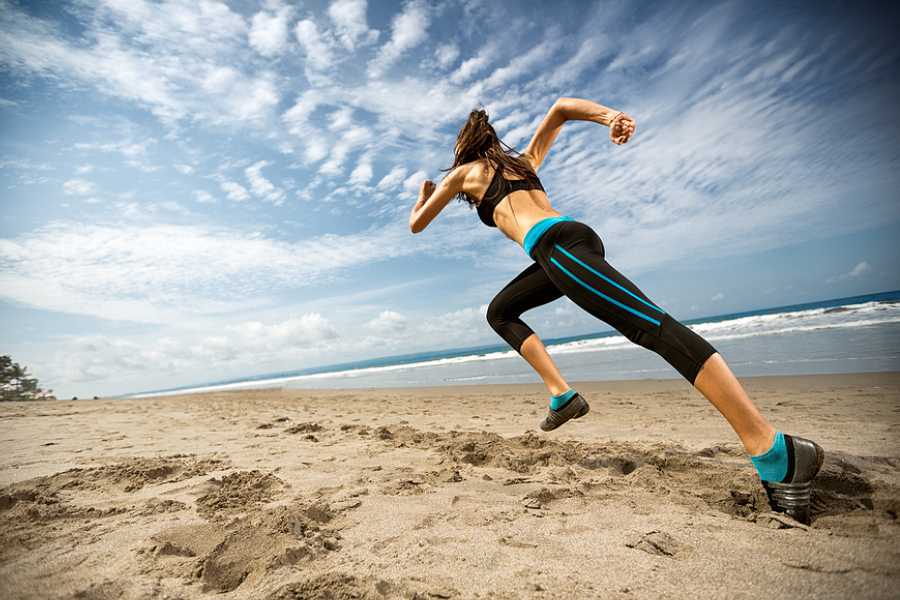The Physics of Sports: How Athletes Use Science to Perform

The realm of sports often celebrates athletes for their physical prowess, endurance, and skill. However, behind every remarkable performance, a profound interplay of physics enables athletes to achieve their peak performance. Understanding the physics of sports enhances our appreciation of these feats and provides athletes and coaches with valuable insights to optimise training and performance. From the aerodynamics of a soccer ball to the biomechanics of a sprinter, physics is an integral part of athletic excellence.
For those looking to delve deeper into these principles, Physics tuition can be an excellent resource to understand the science behind sports and improve athletic training techniques.
The basics of motion and force
At the heart of any sport is the concept of motion. Newton's laws of motion are fundamental principles that govern how athletes move and interact with their environment. The first law, often referred to as the law of inertia, states that an object will remain at rest or in uniform motion unless acted upon by an external force. This principle is evident in sports like ice hockey, where a puck glides smoothly across the ice until it is struck by a player's stick.
Newton's second law, which relates force, mass, and acceleration (F = ma), is crucial for understanding how athletes generate power. For instance, in weightlifting, the force applied by the muscles must overcome the weight of the barbell to accelerate it upwards. The greater the force exerted by the athlete, the more rapidly the barbell accelerates. This relationship is also visible in sprinting, where the sprinter's legs must generate sufficient force against the ground to propel the body forward rapidly.
Aerodynamics and ballistics
In many sports, the motion of balls, athletic wheelchairs’ wheels, and other projectiles is influenced significantly by aerodynamics. The study of how air interacts with moving objects is vital for understanding and improving performance in sports such as soccer, golf, and baseball.
Take soccer, for example. When a player kicks a soccer ball, the ball's trajectory is affected by air resistance and the Magnus effect. The Magnus effect occurs when a spinning ball curves in flight due to differences in air pressure on either side of the ball. Skilled soccer players exploit this effect to bend the ball around defenders and into the goal, a technique famously demonstrated by players like David Beckham and Cristiano Ronaldo.
In golf, the dimples on a golf ball are designed to optimise its aerodynamic properties. These dimples reduce air resistance and increase lift, allowing the ball to travel further and more accurately. Understanding these principles enables golfers to choose the right equipment and refine their swing techniques for optimal performance.
Biomechanics: The science of movement
Biomechanics is the study of the mechanical principles of living organisms, particularly their movement and structure. In sports, biomechanics is crucial for analysing and improving athletic performance, reducing the risk of injury, and developing better training methods.
Consider the biomechanics of a sprinter. When a sprinter takes off from the starting blocks, the force exerted by their legs must be directed efficiently to maximise acceleration. The optimal angle of the sprinter's body, the positioning of their feet, and the coordination of their arms all play critical roles in achieving peak speed. Coaches use biomechanical analysis to fine-tune these aspects, helping sprinters shave precious milliseconds off their times.
In swimming, biomechanics helps athletes streamline their bodies to reduce drag and increase propulsion. By studying the movement of swimmers' arms and legs, researchers can develop techniques that enhance efficiency and speed in the water. Michael Phelps, one of the most successful swimmers in history, has benefited from biomechanical insights to refine his strokes and achieve extraordinary results.
Energy and efficiency
The concept of energy is central to sports performance. Athletes must manage their energy efficiently to sustain performance over time. This is particularly important in endurance sports like marathon running and cycling.
The human body converts chemical energy from food into mechanical energy through metabolic processes. The efficiency of this energy conversion impacts an athlete's endurance and recovery. Training programs are designed to enhance the body's ability to produce and utilise energy effectively. For example, interval training can improve an athlete's aerobic and anaerobic energy systems, allowing them to perform at higher intensities for longer periods.
Technological advancements
Advances in technology have revolutionised the application of physics in sports. High-speed cameras, motion capture systems, and wearable sensors provide detailed data on athletes' movements and performance. This data is analysed to identify areas for improvement and develop personalised training programs.
Additionally, materials science has contributed to the development of better sports equipment. Lightweight, durable materials like carbon fibre are used in bicycles, tennis rackets, and prosthetics, enhancing performance and reducing the risk of injury. In running, the design of athletic shoes incorporates principles of shock absorption and energy return, helping athletes run faster and more comfortably.
Conclusion
The physics of sports is a fascinating field that combines science and athleticism to unlock human potential. From the motion of a soccer ball to the biomechanics of a sprinter, understanding the underlying principles of physics can lead to significant improvements in performance and safety.
As technology continues to advance, the integration of physics in sports will undoubtedly play an even greater role in shaping the future of athletic achievement. For students passionate about both sports and science, enrolling in JC Physics tuition can provide a deeper understanding of these principles, enabling athletes to harness the power of physics to push the boundaries of what is possible, inspiring awe and admiration in spectators around the world.